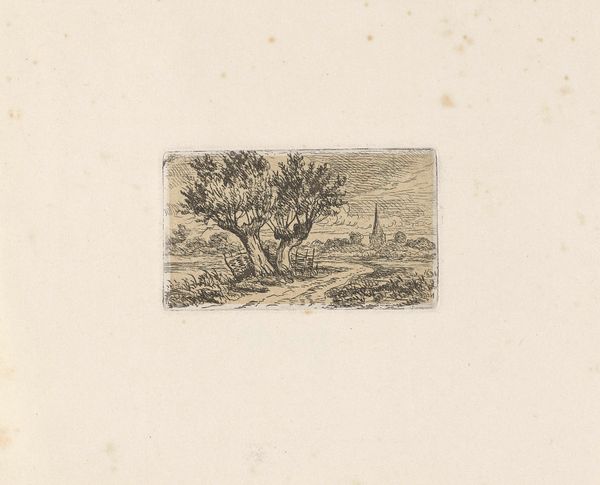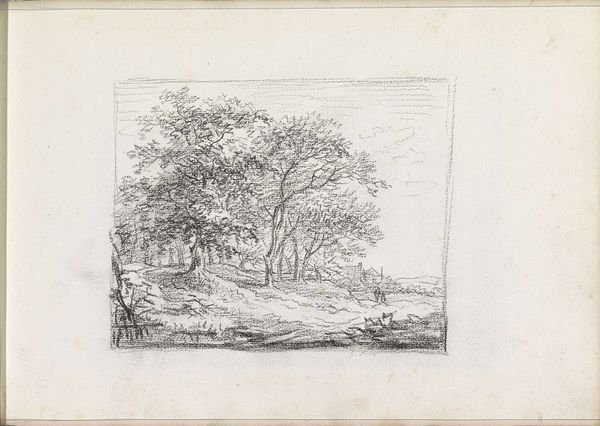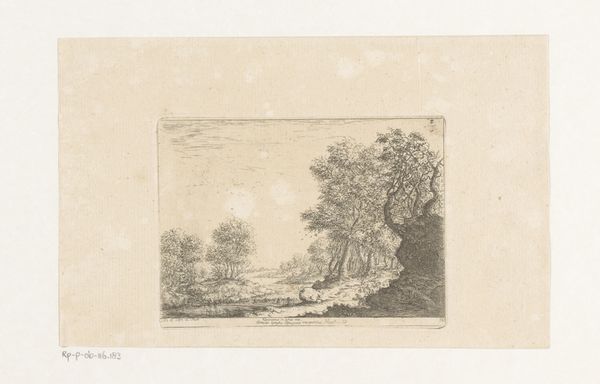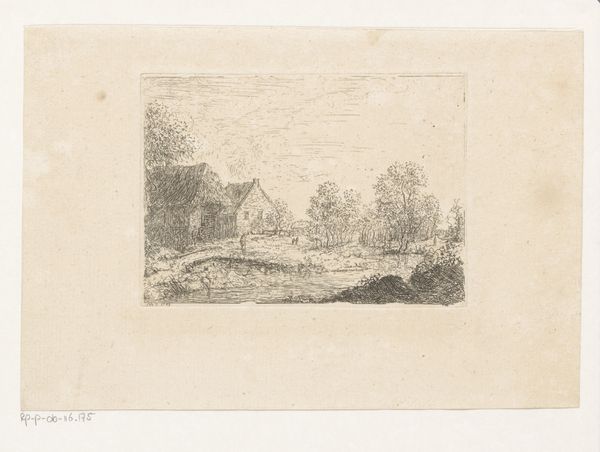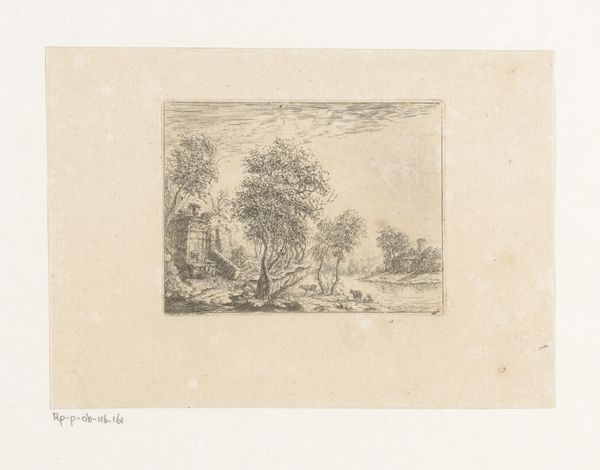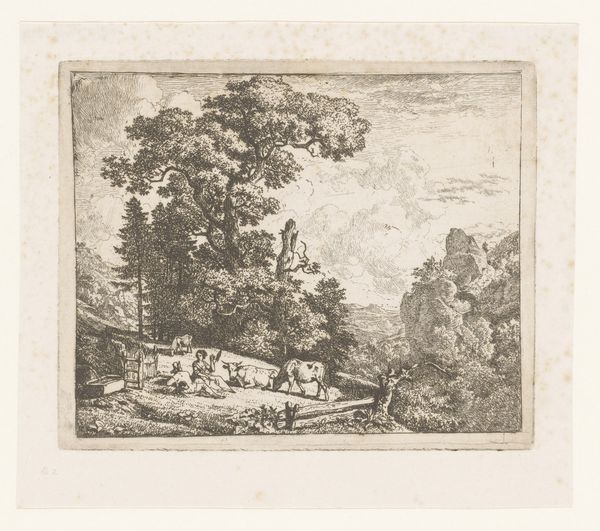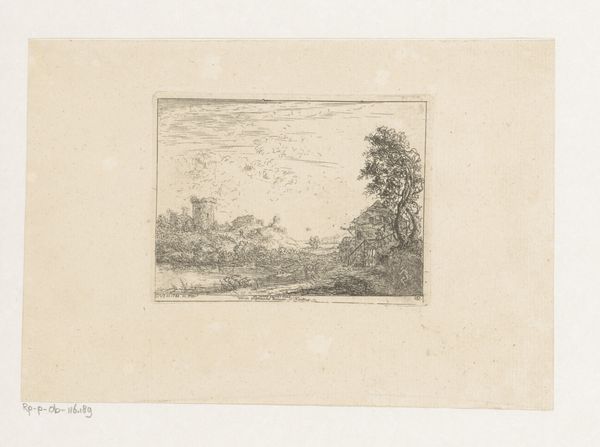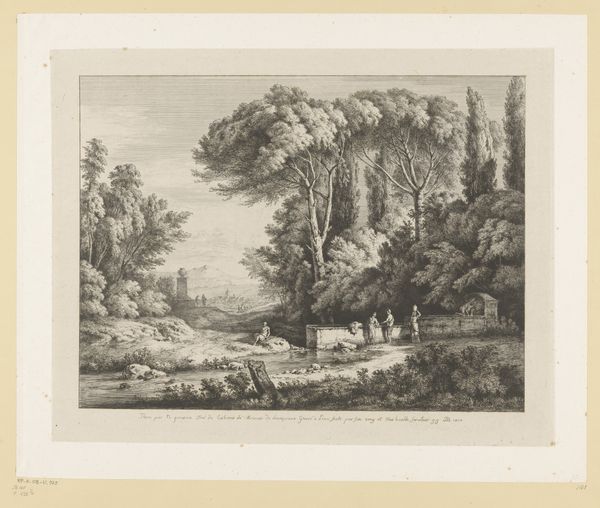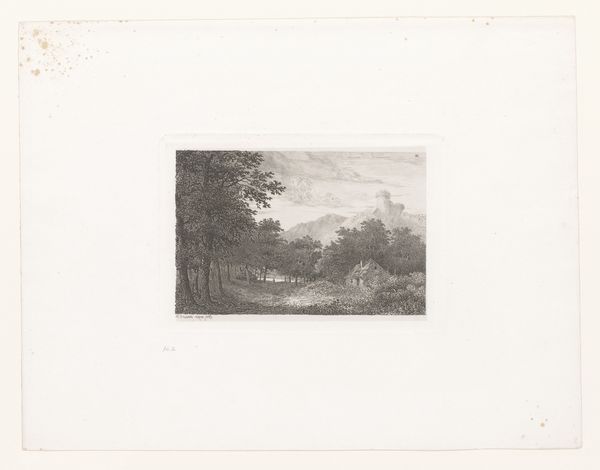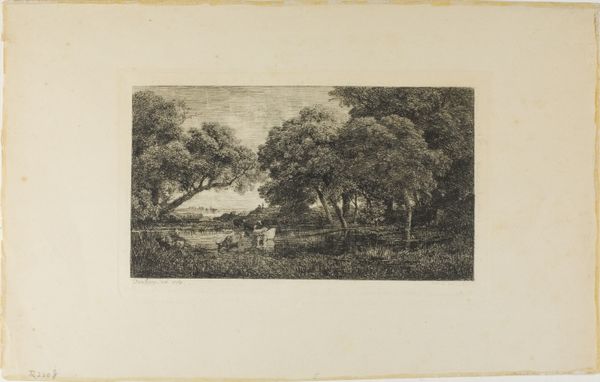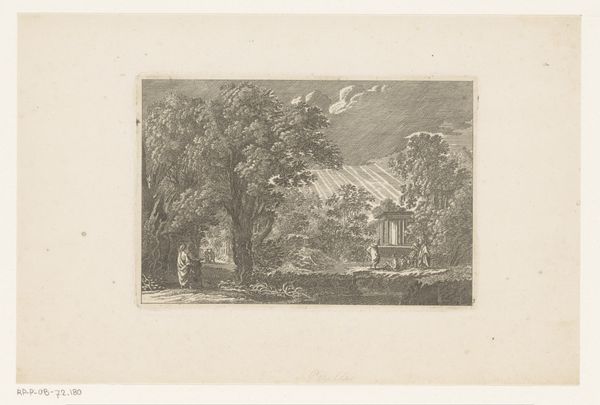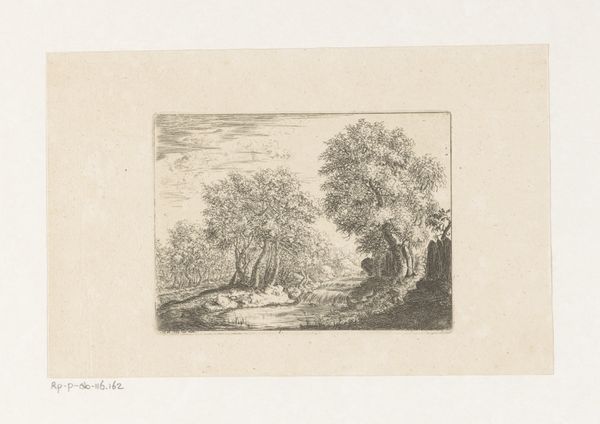
print, etching
# print
#
etching
#
landscape
#
romanticism
#
genre-painting
Dimensions: height 105 mm, width 131 mm
Copyright: Rijks Museum: Open Domain
Curator: Before us, we have David van der Kellen's "Landschap met familie," a work whose dates span from 1814 to 1879, currently held here at the Rijksmuseum. The medium is listed as etching, and it very much plays with Romantic themes embedded within genre painting. Editor: It has this immediate, quiet, reflective feeling, doesn’t it? The etching itself is very detailed, but almost softened. Like looking at a memory, both the landscape and figures appear peaceful. Curator: It definitely invokes the idealized family scene, typical of Romanticism, yet grounded in a portrayal of everyday life. Consider the historical backdrop – the rise of the middle class and emphasis on domestic virtue. Genre painting provided this exact vision, portraying the family as central to societal stability and continuity. We can draw links between this idyllic setting and a specific social aspiration of the period. Editor: Yes, I’m looking closely at how the scene is crafted materially. It’s interesting that van der Kellen chose etching, a process where the metal plate directly impacts the printed image. The layering creates a dense field of labor for such a small finished product. Also notice how labor and leisure collide—the horse laden with goods juxtaposed to the resting figures. Curator: Indeed. And look at the visual choices, too – the way the figures blend harmoniously into the landscape. This promotes the period’s philosophy that nature shapes human existence and, vice-versa, as a cyclical understanding, echoing Rousseau's thoughts on nature’s influence. In the figures we see reflections of both a return to a natural state, but also a recognition of human development. Editor: It also complicates these idealized images as the social and economic shifts allowed this idealized vision to be achievable through access to specific material resources, making works such as this one, somewhat exclusionary by default, perhaps an aspiration instead of an existing lived reality. It begs to question: who is resting versus working here and how do those conditions manifest class hierarchies? Curator: I agree. Art so often reflects dominant ideologies but often masks undercurrents. Thinking about this piece within its social moment challenges that harmony. Editor: Considering the labor behind creating the original etching plates versus the finished product complicates these questions. Even then, art such as this had an audience. The material factors force the question about access. It creates more layers beyond this singular idyllic portrait. Curator: It is interesting how such an unassuming etching can ignite an awareness of material conditions and historical contexts, impacting our perception. Editor: Precisely, let's not forget that the surface is also charged with complex sociopolitical significance.
Comments
No comments
Be the first to comment and join the conversation on the ultimate creative platform.
